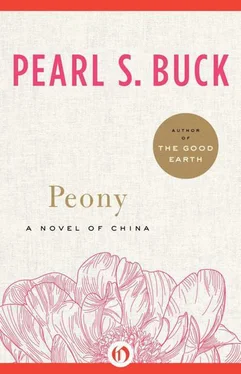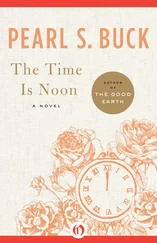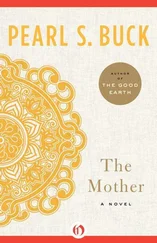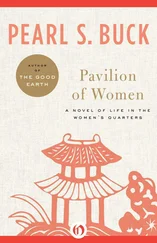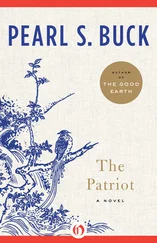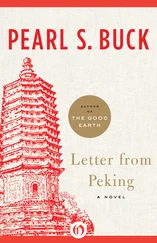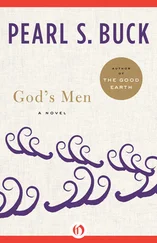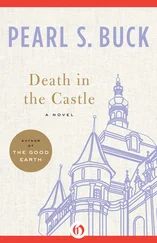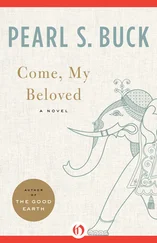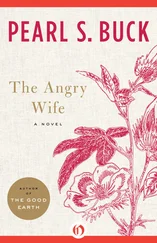Pearl Buck - Peony
Здесь есть возможность читать онлайн «Pearl Buck - Peony» весь текст электронной книги совершенно бесплатно (целиком полную версию без сокращений). В некоторых случаях можно слушать аудио, скачать через торрент в формате fb2 и присутствует краткое содержание. Год выпуска: 2012, Издательство: Open Road Media, Жанр: Современная проза, на английском языке. Описание произведения, (предисловие) а так же отзывы посетителей доступны на портале библиотеки ЛибКат.
- Название:Peony
- Автор:
- Издательство:Open Road Media
- Жанр:
- Год:2012
- ISBN:нет данных
- Рейтинг книги:3 / 5. Голосов: 1
-
Избранное:Добавить в избранное
- Отзывы:
-
Ваша оценка:
- 60
- 1
- 2
- 3
- 4
- 5
Peony: краткое содержание, описание и аннотация
Предлагаем к чтению аннотацию, описание, краткое содержание или предисловие (зависит от того, что написал сам автор книги «Peony»). Если вы не нашли необходимую информацию о книге — напишите в комментариях, мы постараемся отыскать её.
Peony — читать онлайн бесплатно полную книгу (весь текст) целиком
Ниже представлен текст книги, разбитый по страницам. Система сохранения места последней прочитанной страницы, позволяет с удобством читать онлайн бесплатно книгу «Peony», без необходимости каждый раз заново искать на чём Вы остановились. Поставьте закладку, и сможете в любой момент перейти на страницу, на которой закончили чтение.
Интервал:
Закладка:
It was not until the turn of the century, however, that Jews, then living in Shanghai, made a concerted effort to establish close contact with the Chinese Jews in Kaifeng, attempting to help resuscitate the community. This was in response to their discovery that a year earlier, in 1899, the Jews sold the last remaining Torah scroll to the Apostolic vicar of the Henan Mission, a Monsignor Volonteri.
Until the turn of the 20th century, relatively few Jews had heard of the Kaifeng community, and even fewer made the journey there, since they had not the financial backing afforded representatives of missionary groups.
The successful Sephardic and Ashkenazic Jews who had taken up residence in Shanghai during the 19th century, represented best by the Sassoons and the Kadoories, however, became alarmed when they learned of the sale of Torah scrolls and the generally decayed state of the Kaifeng Jewish community.
Banding together, they formed the Shanghai Committee for the Rescue of the Chinese Jews in 1900, hoping to save the Kaifeng Jews from spiritual oblivion. Communication with Kaifeng thus took place, prompting several Kaifeng Jews to travel to Shanghai where they reported that they still observed some of the Jewish dietary laws, and that some were even circumcised, but that the community no longer consisted of practicing Jews. They expressed the fervent hope that their synagogue could be rebuilt with the help of Shanghai’s Jews, which might revive even a semblance of the sense of community that once united them.
When pogroms and immigration of the Russian Jews began to occur soon after, however, attention and funds were diverted from the original intention of rebuilding a synagogue for the Kaifeng Jews. Almost all those who had come to Shanghai hoping to find some Western Jews who could help rebuild their community, returned to Kaifeng with their hopes dashed and their hearts heavy, realizing that the former grandeur of their synagogue and pride as a Jewish community were never again to be.
Bishop White
From 1910–1933 the Chinese Jews had in their midst the Canadian Church of England’s first Anglican Bishop of Henan Province. No other Westerner lived among the Chinese Jews as long as did Bishop William Charles White, whose magnum opus Chinese Jews was published in 1942. White succeeded in getting the heads of the seven clans agree to have his church take over protection of the two extant stone inscriptions in 1912. Two years prior to this, the Jews would not agree to give up legal title to the synagogue site. A year later, however, after a conflict over the possession of the steles with the local authorities, White was able to purchase the stones on the condition that they not leave the province. And in 1914 the site of the synagogue itself was sold by the Jews to the Mission, representing the first time in over seven centuries that someone other than the Chinese Jews owned the site.
By now no more scrolls of the Law were left, and parts of the synagogue were already being used by others in Kaifeng. A Confucian temple had obtained one of the marble balustrades of the former synagogue for over fifty years; two stone lions were said to be outside one of the Buddhist temples, and even the green roof tiles were now part of the local mosque.
In May of 1919, Bishop White held a series of meetings with the Chinese Jews to try to educate them and revive some kind of communal ties between them. Heads of all seven clans were present, and forty families out of the estimated 200 participated. They did not know one another, and only the Shi clan was reported to have kept family records.
The many Chinese-Jewish artifacts which Bishop White purchased while in Kaifeng have since passed into the hands of the Royal Ontario Museum in Toronto, where they now remain. Among those bits of Chinese-Judaica in the Museum’s possession are a black marble chime used to call the Jews to prayer, two stone lotus-carved bowls and a large, cylindrical case for the Torah scroll.
One of White’s main contributions while in Kaifeng was to attempt to revive the community by bringing together the seven major clans, documenting the occasion with photos and articles. However, nothing came of these meetings, as the Jews had by now lost all sense of community and all hopes of rebuilding their synagogue or re-learning Judaism, much less practicing it.
As a community the Jews had by now come to an end, although a strong individual sense of ethnic identity has remained with them, even through the 20th century.
Between the downfall of the Qing dynasty in 1911 and the establishment of the People’s Republic of China in 1949, Kaifeng saw an array of visitors during the turbulent first years of the Republic of China. Some claimed to still notice physical characteristics among the Chinese Jews which stemmed from their Semitic origin, but all noted the tremendous amount of assimilation into their Chinese environment which had by then taken place. Nevertheless, it can be seen from conversations with the Chinese Jews that they still longed for some contact with Jews from the West which would enable them to revive at least their knowledge of Judaism. In particular they asked for schools for the young. Their numbers fairly decimated, the Chinese Jews of Kaifeng proved nevertheless to be resilient and driven to retaining whatever sense of ethnic identity they still possessed.
Chinese Jewish Descendants into the 20th Century
After the creation of the People’s Republic of China, little contact was had with the Jewish descendants in Kaifeng. In 1952, a census of all minority peoples in China was carried out, “minority” being defined as a group whose members spoke a common language of their own, and retained common traditions and cultural traits different from the Han ethnic majority. As Michael Pollak explained in his Mandarins, Jews and Missionaries, “several hundred inhabitants of Kaifeng, apparently unaware that Jews did not fit into any of the minority classifications set up by Peking, trooped to the various census centers, where, to the utter bewilderment of the clerical staffs, they attempted to register as members of a minority that, officially at least, did not even exist. Their efforts were of course to no avail.”
The decade of turbulence and violence which began with the Cultural Revolution in China in 1966 prevented most Westerners from making their way to Kaifeng until the late 1970s. A UPI journalist in 1980 was the first Westerner to visit the Jews of Kaifeng since the 1960s, meeting several members of the Ai and Shi clans who told of the existence of dozens of other Jewish descendants in the city. Although claiming to be Jews on the basis of their ancestry alone, none were said to observe any of the Jewish customs or rituals. The existence of the steles in a safe place in the warehouse of the Kaifeng Municipal Museum was confirmed.
A flurry of activities ensued in 1981 in attempts to contact or research the subject of the Chinese Jews. A survey was conducted by the former curator of the Kaifeng Municipal Museum, Wang Yisha (who is arguably the one person in Kaifeng today who personally knows more Chinese Jews than anyone else), which concluded that there were still 140 families of Jewish descent with six surnames. Of these, 79 families live in Kaifeng and 6l have moved to other parts of China. The 79 families in Kaifeng numbered altogether 166 persons.
The year 1981 saw the publication of an article by Jin Xiaojing, entitled “I am a Chinese Jew.” Jin, a sociologist at the National Minorities Research Institute of the Chinese Academy of Social Sciences in Beijing, only discovered her Jewish roots in 1980 while attending a professional conference. At that time she learned that two of the men whose names were mentioned by others as being Jews, were actually paternal uncles of hers. Although her ancestral home was Kaifeng, it never dawned on her that she might be of Jewish descent, since she was raised as a Moslem!
Читать дальшеИнтервал:
Закладка:
Похожие книги на «Peony»
Представляем Вашему вниманию похожие книги на «Peony» списком для выбора. Мы отобрали схожую по названию и смыслу литературу в надежде предоставить читателям больше вариантов отыскать новые, интересные, ещё непрочитанные произведения.
Обсуждение, отзывы о книге «Peony» и просто собственные мнения читателей. Оставьте ваши комментарии, напишите, что Вы думаете о произведении, его смысле или главных героях. Укажите что конкретно понравилось, а что нет, и почему Вы так считаете.
